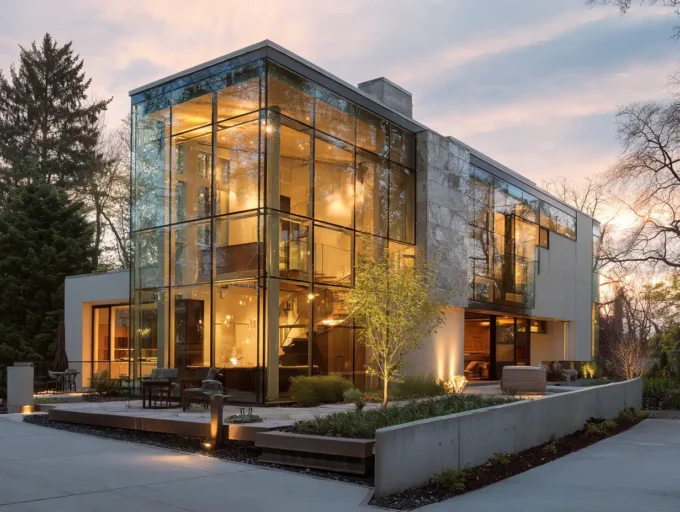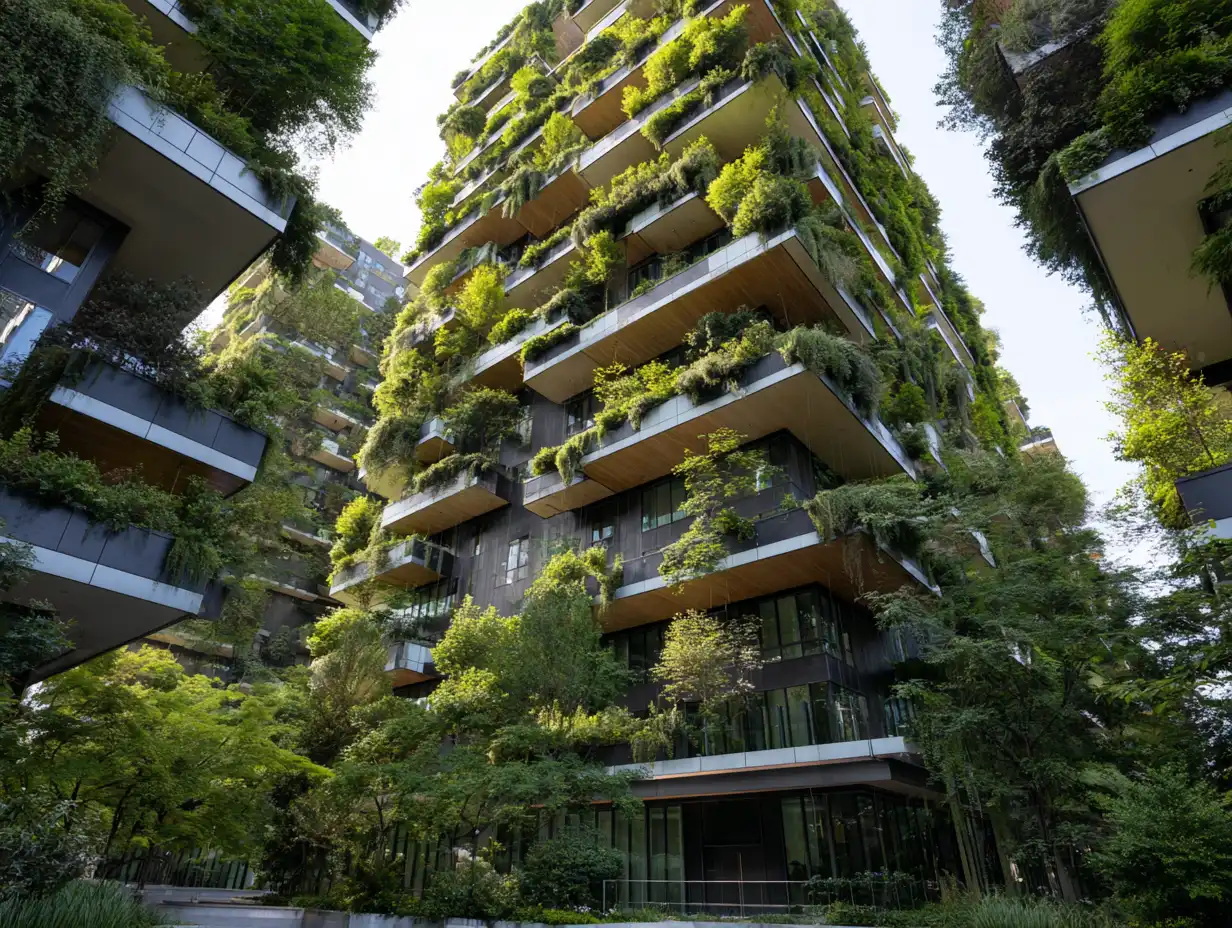As we step into a new era of design, architectural inspirations are evolving at an unprecedented pace. The fusion of technology, sustainability, and cultural influences is reshaping the way we envision our built environment. It’s an exciting time where architects and designers are pushing boundaries and redefining spaces to meet the demands of modern living.
We’re seeing a shift towards biophilic design, where nature seamlessly integrates with urban settings, promoting well-being and sustainability. Meanwhile, technology continues to play a pivotal role, with smart homes and adaptive architecture becoming more prevalent. These trends not only enhance functionality but also cater to our growing desire for personalized and efficient spaces.
Cultural influences, too, are leaving their mark, as architects draw inspiration from diverse traditions and histories to create unique and meaningful structures. This blend of old and new is creating a rich tapestry of architectural innovation that’s both inspiring and transformative. Let’s explore these exciting trends shaping the future of architecture.

The Rise of Sustainable Design
Sustainability drives innovation in architecture. We’re witnessing a shift toward eco-friendly practices.
Green Building Materials
We’re focusing on using green building materials like recycled metal, reclaimed wood, and bamboo. Recycled metal offers durability and reduces mining demand. Reclaimed wood provides aesthetic appeal by repurposing existing resources. Bamboo grows quickly and sustainably, offering structural benefits.
Energy-Efficient Architecture
Designing energy-efficient structures remains a key trend. We’re integrating solar panels, energy-star windows, and green roofs. Solar panels harness renewable energy, reducing reliance on fossil fuels. Energy-star windows enhance insulation, minimizing energy loss. Green roofs improve insulation and manage stormwater, enhancing urban environments.
Integration of Smart Technology
Smart technology continues to shape modern architectural designs, embedding efficiency and convenience into our daily lives. Architects increasingly incorporate advanced automation and responsive design to create intelligent, future-ready spaces.
Home Automation
Smart homes utilize automation systems to enhance comfort and security. We see a rise in integrated IoT devices, such as smart thermostats, lighting, and security cameras, offering residents seamless control via mobile apps or voice assistants. Energy management systems automatically adjust settings based on usage, optimizing energy consumption and reducing costs. These features create a cohesive living environment where technology simplifies household tasks and improves sustainability.
Responsive Urban Design
In urban design, responsiveness creates adaptable spaces suited to dynamic city environments. Smart sensors and data analytics tools monitor environmental conditions, enabling systems to adjust lighting, heating, and cooling in public spaces, optimizing energy use and improving comfort. Cities implement smart grids and transportation networks to reduce congestion and pollution, employing responsive technologies to foster sustainable urban growth. These innovations support efficient cityscapes that prioritize both resource management and quality of life.

Embracing Biophilic Design
Biophilic design is transforming architecture by blending natural elements into urban spaces, enhancing both aesthetics and occupant well-being. Through innovative solutions, we align nature with structural environments.
Nature-Inspired Structures
Nature-inspired structures mimic natural forms and patterns to foster a deeper connection with the environment. Architects use organic shapes, like flowing lines and curves, to reflect landscapes and ecosystems. For example, the Eden Project in the UK demonstrates this approach with its geodesic biodomes that resemble natural forms. Designers incorporate materials such as stone and wood to evoke a sense of nature within built spaces.
Indoor-Outdoor Living Spaces
Indoor-outdoor living spaces create seamless transitions between interiors and exteriors, enhancing natural interaction. By using features like large glass walls and retractable panels, architects blur the lines between inside and outside environments. Homes with courtyards and terraces foster this experience, providing natural light and fresh air. For instance, the Farnsworth House integrates floor-to-ceiling windows and open spaces, inviting the outdoors in and offering a continuous connection to the surrounding landscape.
Minimalist and Functional Trends
Minimalism isn’t just aesthetic; it’s shaping architecture through open, adaptable spaces that enhance functionality. Architects are crafting spaces that prioritize simplicity and efficiency without sacrificing style or comfort.
Open Concept Designs
Open concept designs offer seamless and airy environments, breaking down barriers between living areas. We see the disappearance of traditional walls, replaced with multi-functional zones that encourage fluid movement and interaction among occupants. Architects often use visual elements like color or lighting to subtly define spaces, maintaining a cohesive flow throughout the home.
Modular and Adaptive Spaces
Modular and adaptive spaces cater to the flexibility of modern living, allowing rooms to transform according to the occupants’ needs. These spaces feature movable walls, furniture on caster wheels, and convertible fixtures, creating versatile environments that shift from workspaces to relaxation zones. This adaptability ensures spaces remain functional and personalized, reinforcing the minimalist ethos by utilizing available space efficiently.

Revival of Traditional Techniques
Exploring traditional techniques offers a unique lens through which we can enrich modern architecture with historical depth and cultural significance. This revival breathes new life into time-honored practices, ensuring they’re not lost to contemporary advancements.
Vernacular Architecture
Vernacular architecture is gaining attention for its context-driven design. These structures, which use locally sourced materials and adapt to regional climates, offer tailored solutions to environmental challenges. For example, adobe homes in hot climates provide natural cooling, illustrating how traditional wisdom can address modern sustainability concerns. This approach not only enhances building performance but also celebrates cultural identity through architectural expressions.
Craftsmanship in Modern Contexts
Craftsmanship is being redefined as it’s integrated with modern techniques. Artisans merge traditional skills with contemporary design, producing bespoke elements that add uniqueness to structures. Custom-crafted details, such as intricate woodwork or metal accents, offer a tactile connection to architectural heritage. As we embrace digital fabrication and advanced materials, the fusion of craft and technology elevates the aesthetic and functional quality of current architectural projects.

Cultural Influences and Global Exchange
Architectural design thrives on cultural influences and the global exchange of ideas. Through merging traditions and contemporary innovations, architecture becomes a rich tapestry reflecting diverse inspirations.
Fusion of Styles
Architects integrate diverse styles to create unique structures. Combining elements from different traditions, these hybrid designs offer fresh aesthetics and functional solutions. For example, blending Scandinavian minimalism with Asian zen principles can result in tranquil, open spaces that emphasize simplicity and harmony.
Architecture as a Cultural Bridge
Architectural projects often serve as cultural bridges. By embracing global motifs, architects produce landmarks that resonate with international audiences. Museums and multicultural centers, for instance, frequently incorporate elements from various cultures, fostering a sense of unity and understanding. Such designs invite dialogue and cultural appreciation through their thoughtfully curated spaces.
Conclusion
Architectural inspirations today are dynamically influenced by sustainability, technology, and cultural exchanges. We see biophilic design enhancing urban well-being by integrating nature into built environments. Smart technology transforms our living spaces into efficient, adaptive systems catering to modern lifestyles. Diverse cultural influences reshape architecture, creating structures rich in identity and innovation. Minimalism and traditional craftsmanship coexist, blending functionality with heritage. These trends suggest a promising future for architectural design, emphasizing adaptability and global connectivity.
- architectural design trends
- architecture and cultural heritage
- Contemporary Architecture Ideas
- cultural architecture influences
- cultural architecture projects
- cutting edge architectural technology
- eco-friendly building designs
- future architecture concepts
- green building architecture
- innovative architecture solutions
- integrating technology in architecture
- Modern architecture inspiration
- sustainability in architecture
- sustainable architecture design
- sustainable architecture practices
- Technology in Architecture
- technology-driven design














Leave a comment